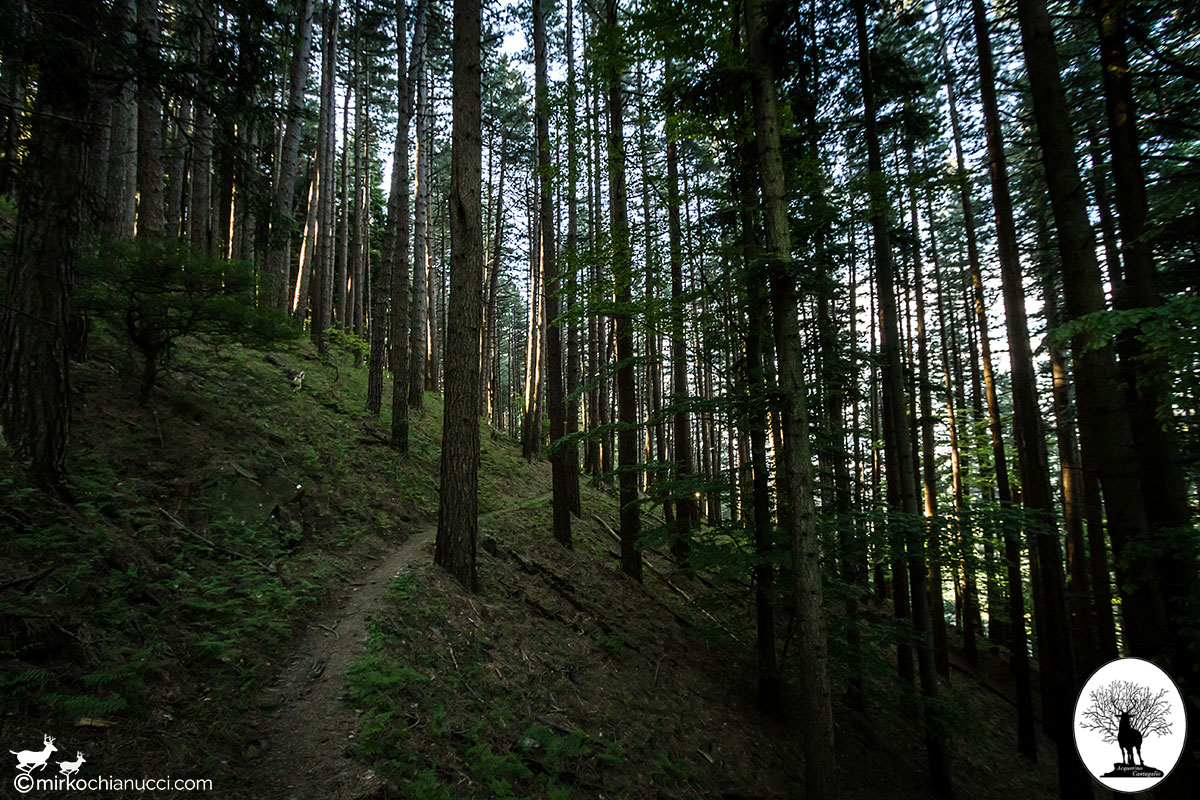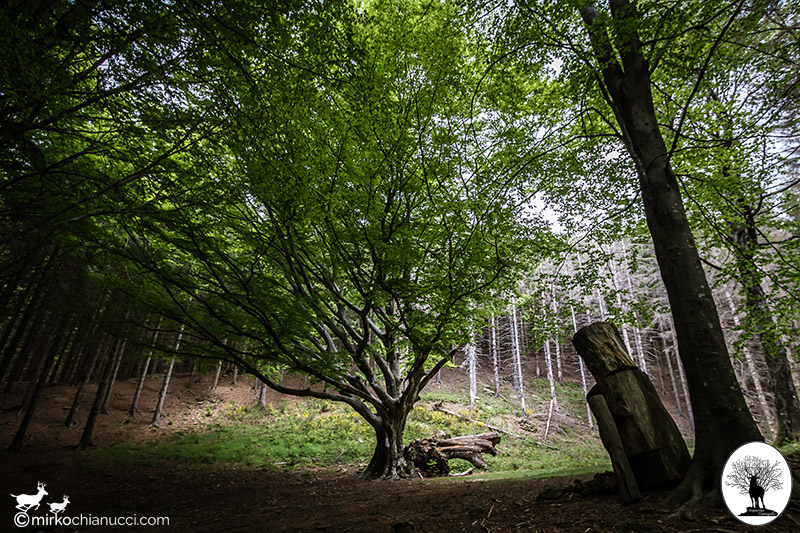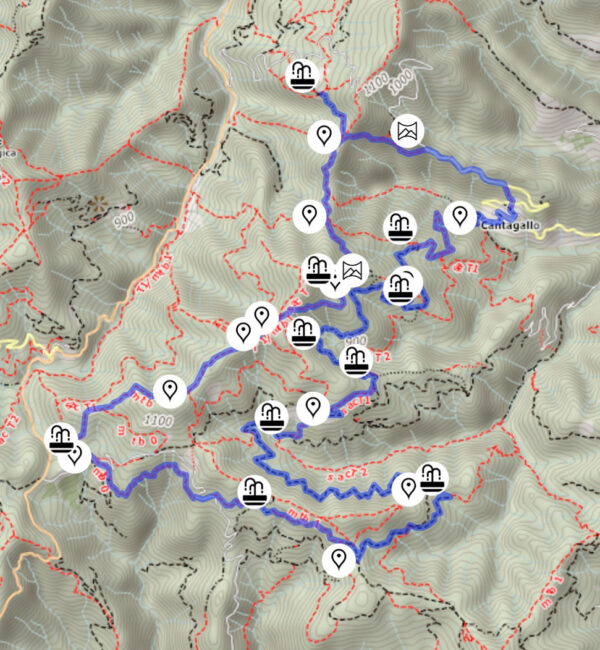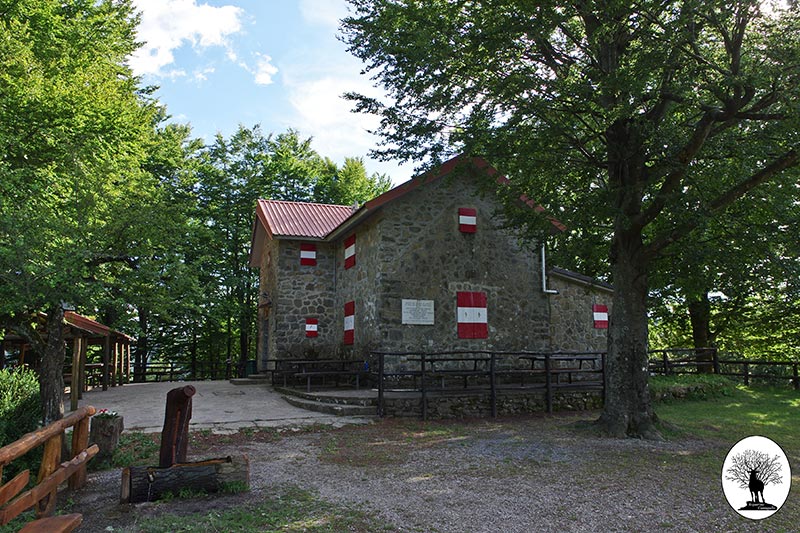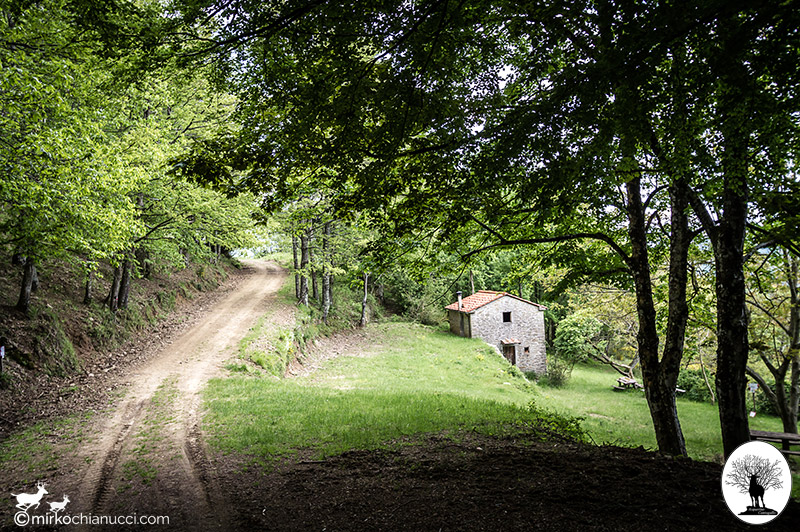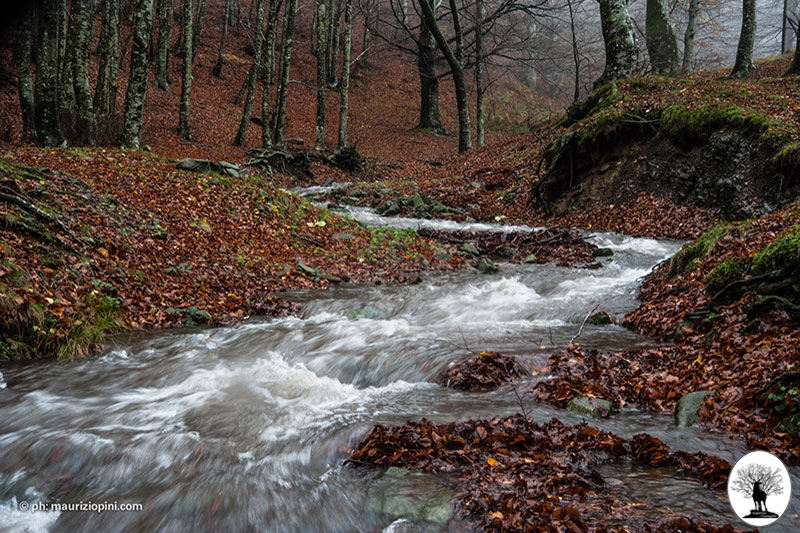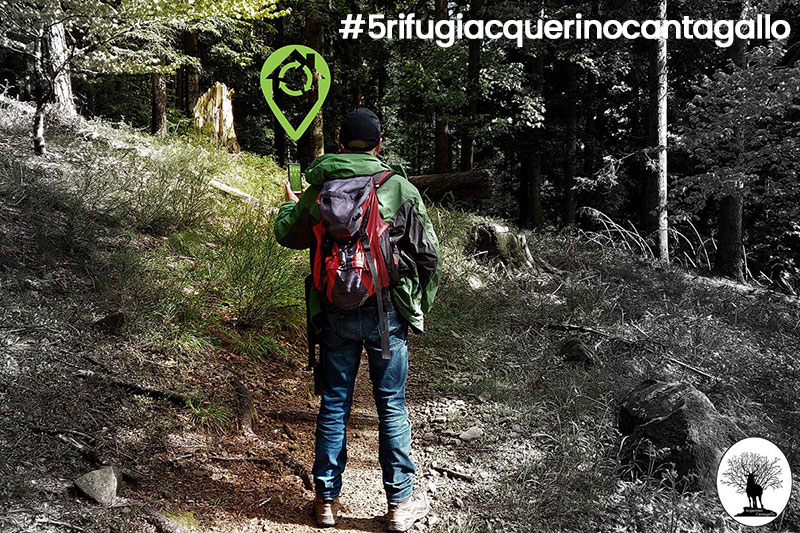A journey through history, therefore, but also an adventure in the most interesting places of the Reserve, known for the large quantity of waterways that cross it, for its beech forests, centuries-old chestnut groves and clearings, where meeting the majestic Acquerino deer is common.
Starting point 1: Cascina di Spedaletto
Visitor Center, currently managed by the Passione Natura Biobiettivi Association, and farmhouse, managed by the Iori family (who have been working with sheep farming in the area of the Acquerino Cantagallo Nature Reserve since the 1950s, when, at the invitation of the Guicciardini, they moved from the Pistoia area to Cascina Le Barbe), Cascina di Spedaletto represents the closest access gate to the Prato-Pistoia plain.
The building, whose origins date back to medieval times, must have been, in the past, a “hospital” or a place where the traveler found refreshment and protection during long journeys. The structure is in fact located on an important crossroads between the Agna, Bisenzio and Limentra valleys. Right in the meadows adjacent to the farmhouse in the past, on the occasion of Saint Anna’s day, July 26th, the inhabitants of the three valleys met to sell their goods and for a party that lasted until late, with music, food and lots of wine which in some cases led to fights between men, so much so that it was called “the punching party”.
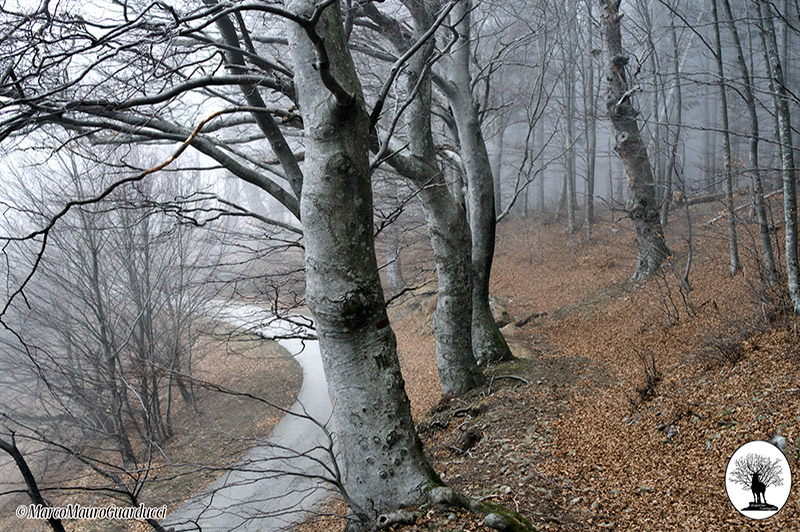
Cascina di Spedaletto was part of the system of rural buildings which, together with the large parts of the land which became part of the regional state property, belonged first to the Bardi counts, and then to the Guicciardini, who administered the area with the Luogomano farm. Next to the Cascina, a plaque in the small oratory dedicated to Sant’Anna remembers the first owners, the Bardi Counts, who renovated the chapel in the mid-1700s.
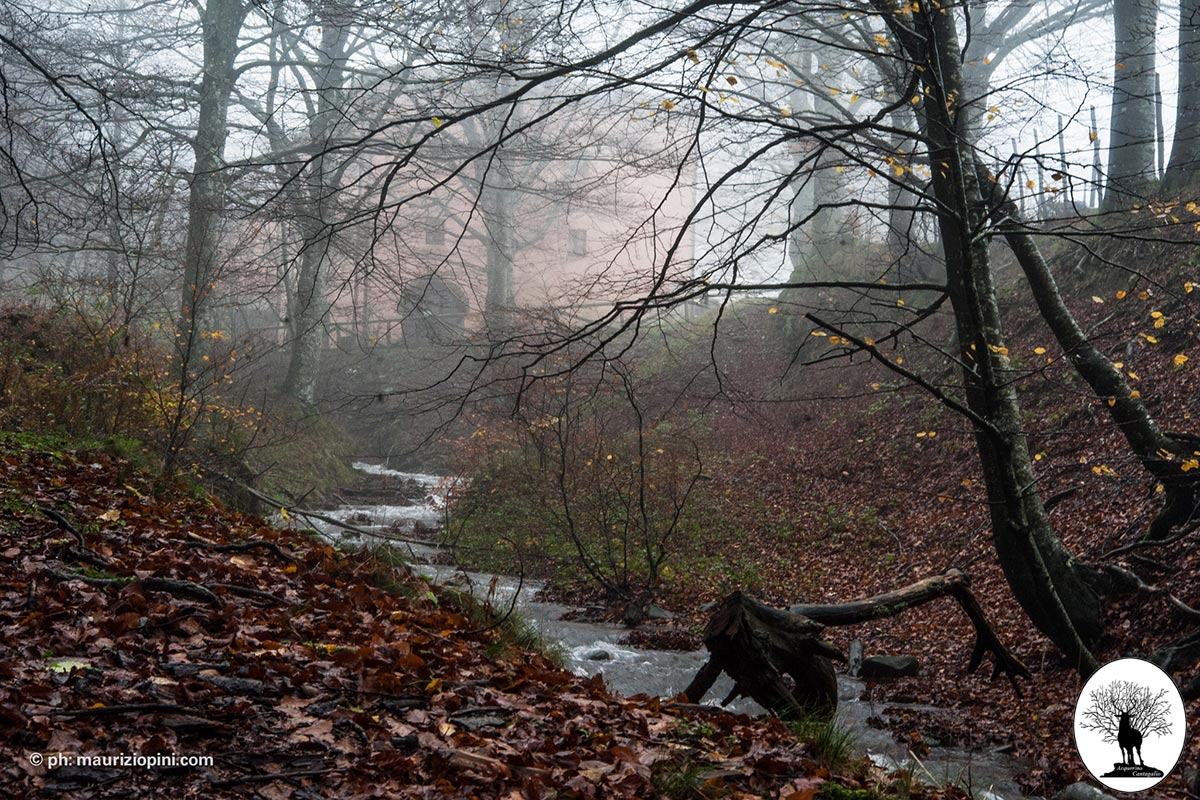
Ridge towards Pian della Rasa
A trail starts above Cascina di Spedaletto and quickly reaches the ridge. We are on the watershed: the streams that descend from the eastern side bring their contribution to the Bisenzio, which will flow into the Tyrrhenian Sea, those that descend from the western side will end up in the Eastern Limentra, whose waters reach the Adriatic Sea.
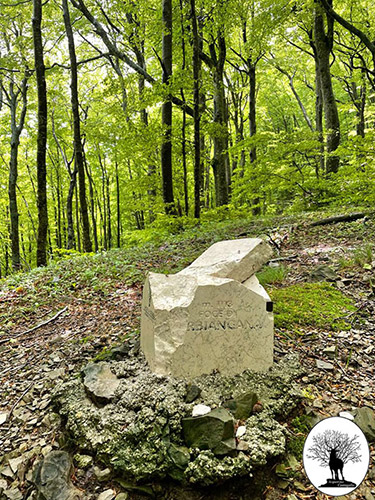
The two rivers, with the first waterways that form them, are in fact the geographical borders of the Acquerino Cantagallo Nature Reserve.
Even the numbering of the CAI trails on the two sides is indicative of the geographical limit: the paths to the east have even numbers, those to the west have odd numbers.
Among beech forests and conifer reforestation on both sides, the trail heads towards the highest peak of the Reserve, Mount Bucciana (the highest peak in the province of Prato entirely within the provincial borders). Along the route, depressions and a cross recall the period of the passage of the front, when the German military posts had occupied the area along the Gothic Line and from there the bombings began towards the plain below.
A snowfield, near Cerbiancana, was used in ancient times to store ice for the farms. Just below, a spring supplies the first drop of water to the Fosso de Le Barbe and then to the Bisenzio.
After various crossroads, with paths leading on one side towards Faggione di Luogomano (now fallen, but the toponym remains) and Cantagallo and on the other towards Monachino, between climbs and descents, after passing the promontory of La Pigna, you arrive after a flat stretch at Pian della Rasa.
Starting point 2: Pian della Rasa
Just outside the Acquerino Cantagallo Nature Reserve, Pian della Rasa with its clearings and conifers (planted in the last century on areas dedicated to grazing) is very reminiscent of the Alpine landscape. Below the basin that separates Monte Cicialbo from Poggio Cicialbo is the plateau that hosts the Luigi Pacini Refuge, built in the 1930s on land donated to the CAI by the honorary member Pacini, a Florentine surveyor who spent most of the year Cantagallo (upon his death in 1946, many of his possessions passed to the Municipality of Cantagallo by his will). The refuge, which belongs to the Prato section of the CAI, has some dormitories for overnight stays, a bar and a restaurant room. On the side overlooking the Limentra valley there is a small bivouac that is always open, with a table and stove.
From the Pacini Refuge the trail goes back a little: at the Treppio Pass you leave the ridge path to descend towards the town of Cantagallo, where you reach a stretch of asphalt road.
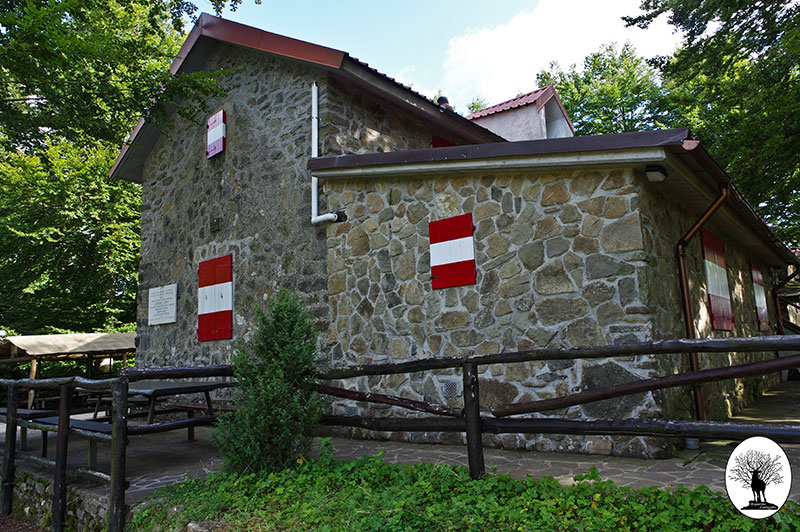
Starting point 3: Cantagallo Visitor Center
The Cantagallo Visitor Center was built in an old building donated to the community by the knight Luigi Pacini and equipped by the Municipality to serve the Reserve several years ago. It houses a large hall for conferences and lunches and rooms on the upper floors with some educational panels. It is located in the center of the town of Cantagallo, once an important rural settlement, with shops, a restaurant, a school and an open-air disco, which remained active until a few years ago. Positioned on the Gothic Line, the town was almost completely exploded by the passage of the front: few houses remained standing in 1944, and even the ancient church, dedicated to San Biagio, was damaged by the explosions and set on fire.
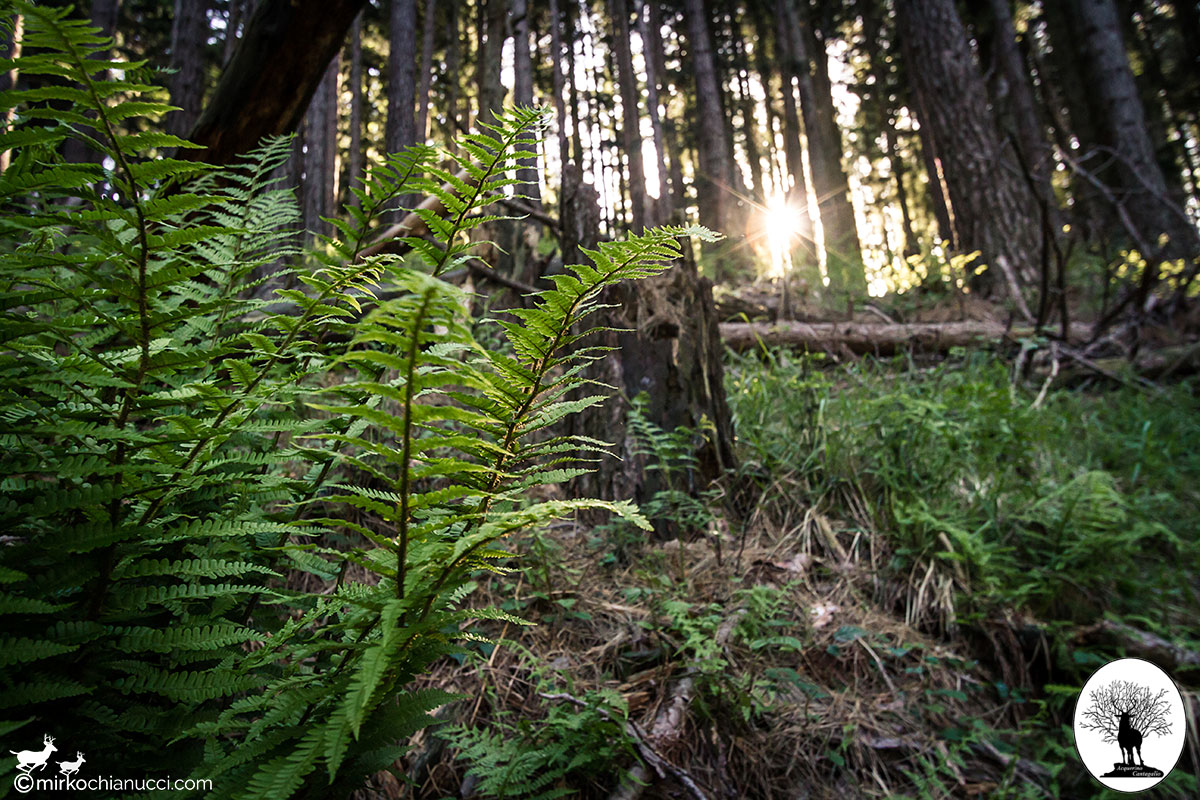
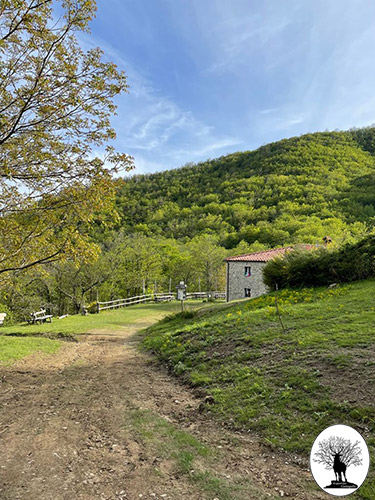
From Cantagallo to Cave
Leaving the Visitor Center behind us, we take the dirt road that leads to the bridge over the Ceppeta stream and to the crossroads with CAI 38. From there we take the first path on the right, the Botanical Path: built several years ago, it is in poor state of maintenance and the plants still described on the little remaining signage are typical of the area. After passing some beautiful chestnut groves, you arrive at Cave.
Cave
Refuge and environmental laboratory renovated together with the other farmhouses at the end of the last century, it houses several dormitories and a dining room. It is immersed in a centuries-old chestnut grove, the main source of income, together with sheep farming and cattle breeding, of the farmers who lived there until shortly after the middle of the last century.
The refuge is completely autonomous: the water that enters the building and that flows from the fountain near the Cascina comes very pure from the Fonte Fresca (a perennial spring along the road to Cerliano), the heat is provided by a wood stove which thanks to a pump supplies hot water to the radiators and the necessary energy is created by photovoltaic panels.
It is currently managed by the Prato section of Legambiente, which organizes excursions, thematic weekends and summer camps for children.
From Cave to Cascina Le Barbe
From Cave we take the forest road that leads to Luogomano, Le Barbe and the Acquiputoli pass: we are in the heart of the Acquerino Cantagallo Nature Reserve, along a route that was used by the inhabitants of Cantagallo to travel to the Pistoia area. The road runs almost parallel to the CAI 00 trail on the ridge: it is a halfway route that passes through beech forests, conifer reforestation and large clearings, with breathtaking views of the surrounding panorama. Along the route we find several buildings, some in a state of ruin. The first we find is Cerliano, home to a large farm belonging to Luigi Pacini which was completely destroyed during the German retreat. What remains of the complex, the reed bed, has been used as a bivouac for travelers (always open).
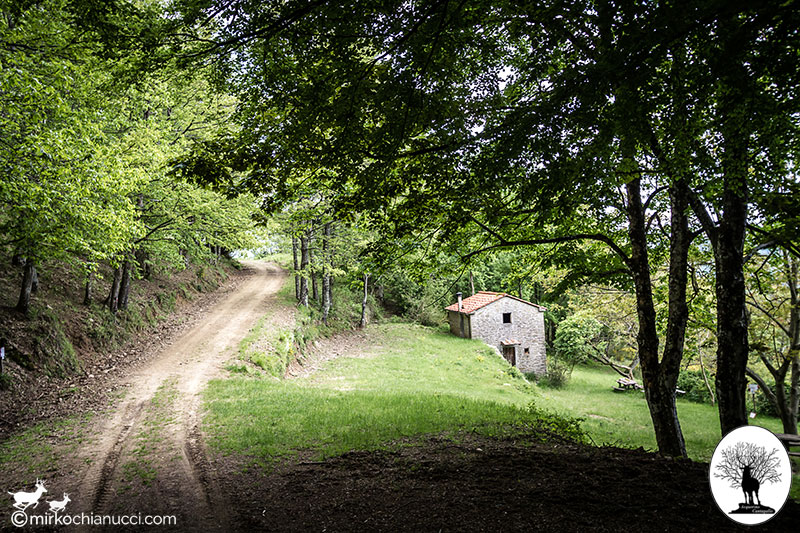
Next to it, the Holy Source, about which several legends have been told. After Cerliano we find the Casotto del Bindini, used as a warehouse and bivouac by forestry workers, and other buildings, used in the past mostly for shelter for shepherds and livestock, such as the Casotto di Giulio (above, just before Le Barbe, open as a bivouac for hikers).
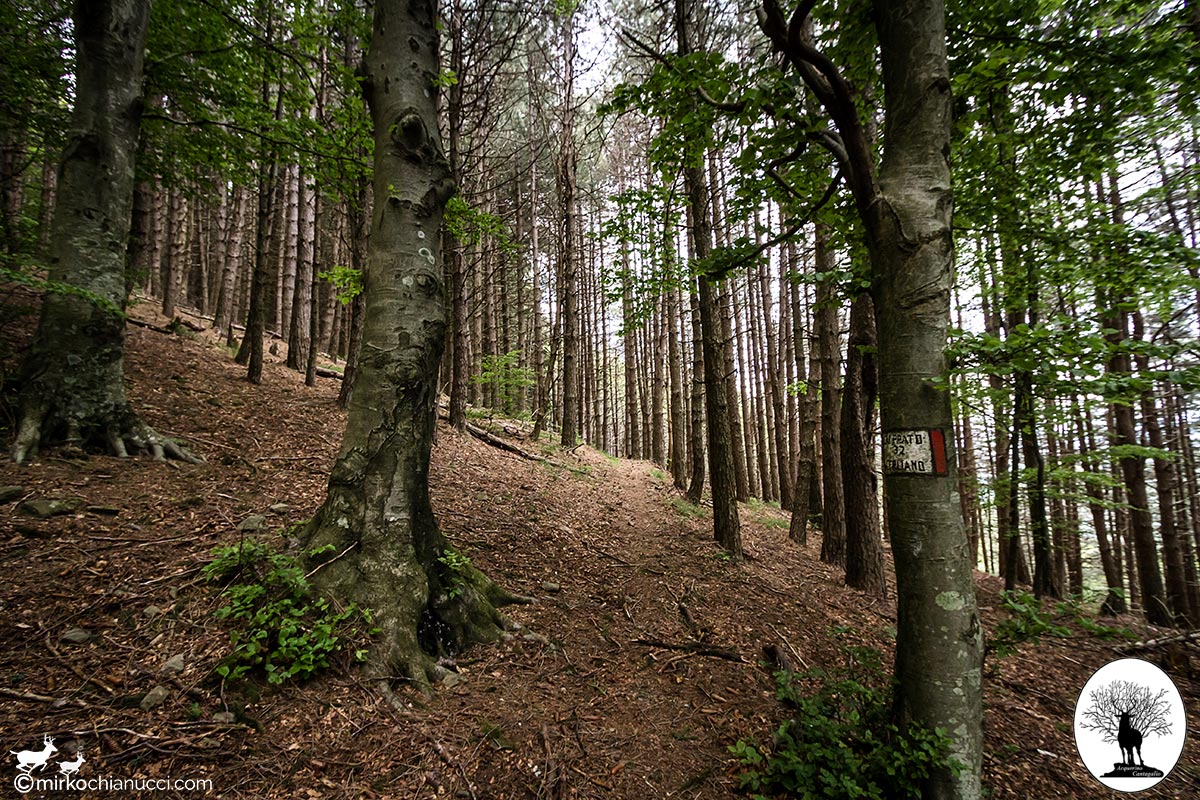
Le Barbe
Large building that belonged to the Luogomano estate (Guicciardini) which owned 4 farms in the area (Le Barbe, Cascina di Spedaletto, Podere del Vallone, Campaccio). In the last century, several families lived there, dedicated to the cultivation of wheat, barley, potatoes and rye and to the breeding of sheep and cows. Near the structure a perennial source provided fresh water for the burraia and poured into the underlying ditch, Le Barbe, which much further down, at the beginning of a very narrow and suggestive valley, joins the Trogola stream to form the Bisenzio.
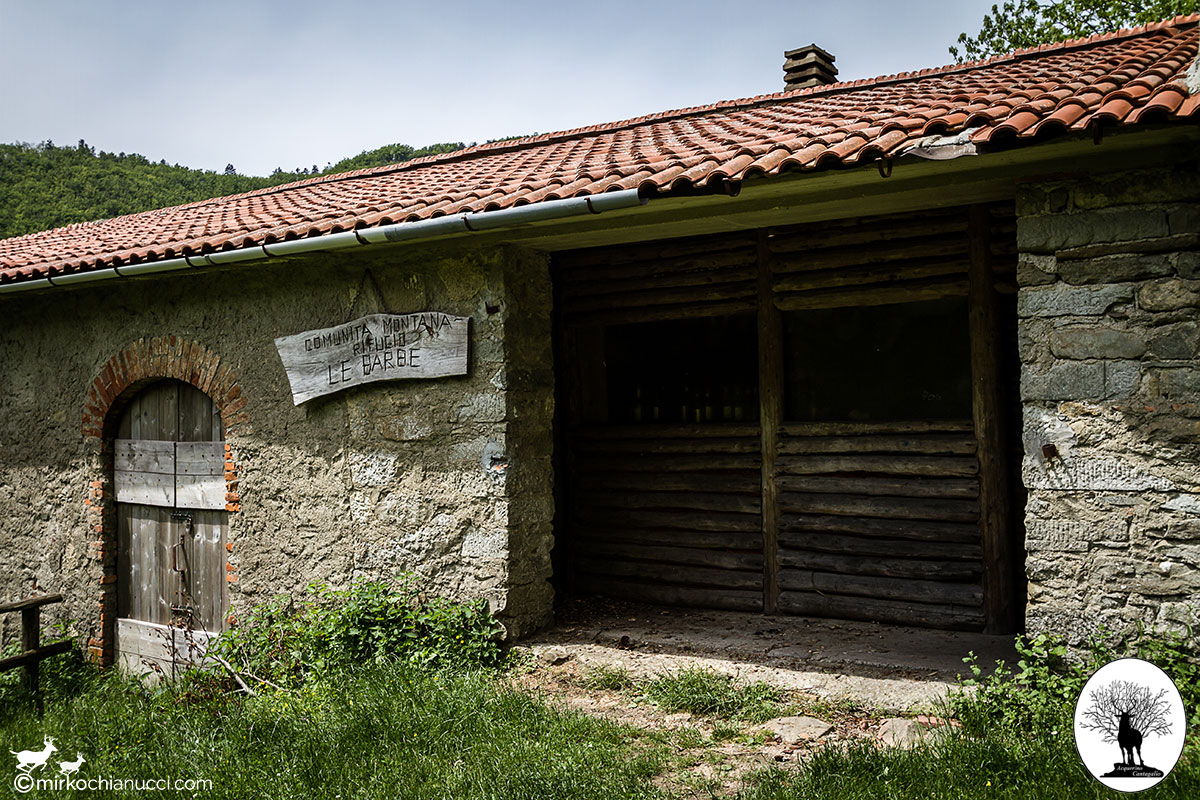
The building is currently used partly as a warehouse for the Union of Municipalities and partly as a bivouac which is always open for hikers. Inside there are large tables, benches and a fireplace.
From Le Barbe to Vespaio
The road runs between curves and straights, in a vegetation of oak, chestnut and beech trees, and between the streams which, descending from the ridge, feed the Fosso de Le Barbe with their waters.
The Cascina di Vespaio appears after a slight descent: belonging to the noble Borghese family and the Fattoria di Javello, the body of the building included several structures, used for breeding and chestnut growing (the reed beds below are in a state of ruin). Equipped with a burraia and a source of very fresh water, after the restoration the Vespaio was used as a refuge for hikers, who can find hospitality for a meal or to sleep. The management is currently in the hands of the hesychast monks of the Montecuccoli Abbey, who have created a chapel in one of the dining rooms for those who want to use the place for spiritual retreats.
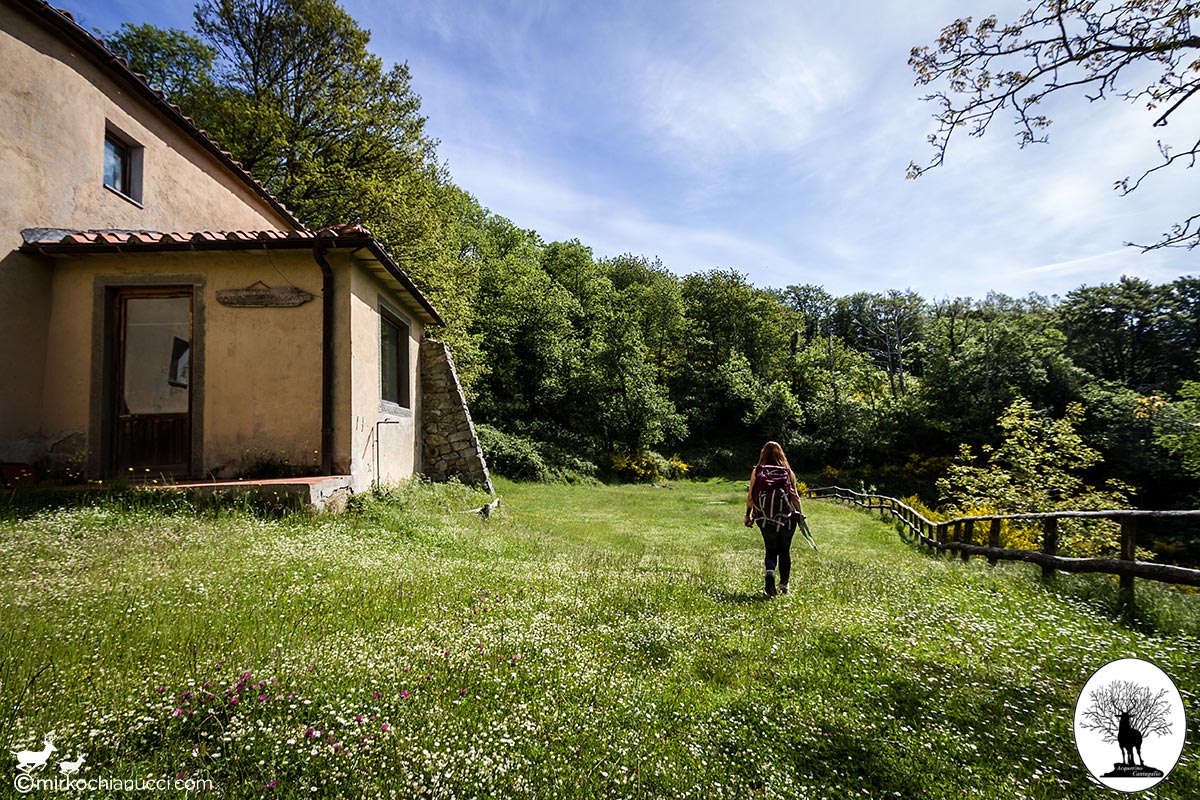
Starting point 3: Vespaio Passo degli Acandoli – Poggio Alto
From Vespaio the forest road climbs towards the Acandoli Pass, where a barrier indicates the border with the Municipality of Montale and the end of the protected area. We continue uphill, to the right and towards the end of the ring. A hillside road climbs through coniferous and beech woods, with beautiful views of the Prato and Pistoia plains, right below the top of Poggio Alto: a plaque on the summit commemorates the fallen of the bloody battle that took place in that place, where they found the both soldiers of the German army and those of the Commonwealth troops who arrived in Italy for the Liberation died.
After crossing the road that connects Tobbiana di Montale with the Reserve, you quickly reach Cascina di Spedaletto.
